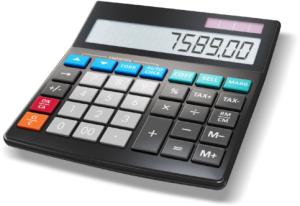Get Ready For Tax Time… In April?
“What? You want me to start thinking about tax time in April? We’ve only just had Easter.”
That’s precisely the reason. Once the Easter chocolate-rush is over, the advertisers will set out to focus you on Mother’s Day; that’ll come and go and, before you know it, it’s end of financial year and you’ll go into stress mode as you scramble to get everything pulled together for your accountant.
Why not start getting organised for tax time now? If you put yourself into “tax-preparation mode” nice and early this year, how do you think that’s going to affect the way you feel on June 30?
Imagine kicking back in early July with your refund already in hand (Yes, the early bird will beat the rush at the ATO), while all the procrastinators out there are still scrambling to dig up old receipts and finish their stocktake, asset review, debt write offs and superannuation shuffles.
So, with time to spare between now and June, is this the year to get caught up, straightened out, and financially organised once and for all?
Here’s a few tips to enable you to grab a head start on the process, well before year’s-end.
Begin by getting your files organized. I’ll recommend a five-step process, which I call the “5C System”:
1. Clean: Get rid of outdated information, files, records, etc. If you have any doubts about the need to keep something, store it off site or out of sight. Just the physical act of de-cluttering your working area will give you a lift in both productivity and energy.
2. Chart: Map out your (new) record keeping system for tax documents and data.
3. Checklist: Compile a list of every single item you will need, allocate a time to its preparation or location, assign a person as responsible for its assembly, then work your way down the checklist until it’s all done.
4. Classify: File each item in its appropriate place according to your Chart. Create separate folders (they’re cheap) for each class of information, report, document, etc, and label each folder clearly (remember, someone else is going to have to go through this to come up with an accurate tax figure for you, so put them in an excellent mood by making everything easy to find!)
5. Contract: Hire out what you can’t do or don’t want to do (we’re all the same in that the things we don’t want to do take us two to ten times longer than they would take a paid professional who has the skill, the knowledge, and the motivation!)
Here’s how to use it:
1. Clean. Throw away or recycle any unnecessary duplicates, outdated draft copies, and otherwise unnecessary materials before they turn into a huge mess and an intimidating chore. When it comes to cleaning, it is all too easy to keep way too much. Unless you feel like perpetually expanding your office space, adding a room to your home, or continually buying more filing cabinets, here are some guidelines on what you can toss or shred, anxiety-free:
• Airline ticket stubs (once the points have been applied to your frequent flyer account)
• ATM receipts (once they have cleared your bank)
• Business cards from others (input the data into your contact management software and toss the cards)
• Catalogues you didn’t request or haven’t used (if you want to buy something, you can probably find it online)
• Credit card receipts (once you’ve reconciled your account, toss any that aren’t tax related, needed for a warranty, or might be returned)
• Financial records (anything older than a year should be moved out and stored in archive boxes, clearly marked with the year)
• Old calendars with “pretty pictures” (donate to a pre-school or nursing home)
• Old seminar and study papers (how often have you referenced those?)
• Old warranty manuals (for items you no longer have)
• Outdated policies (if you no longer hold the policy, you don’t need it)
• Stacks of magazines you haven’t touched in years (enough said)
2. Chart. Decide what you need to keep for taxes (with the help of your accountant) and have a clear understanding of what needs to be saved (and how long to save it):
• BAS & IAS Statements and Tax Returns (keep for five years)
• Bank statements, credit card statements and bills that document deductions (keep for five years)
• Employee Pay Advices (until you are sure your annual PAYG Payment Summary is correct)
• Warranty info and receipts for big-ticket items (for as long as you own the product)
• Receipts for tax refunds and contributions (keep forever-it’s the government!)
• Investment statements (hold until five years after the investment is sold)
• Building/leasehold improvement receipts (retain as long as you own/lease the premises)
3. Checklist. Start a checklist of things that you’ll want to have on hand when you file your annual return. Some of these won’t be available until after the end of the year, but there are others that you’ve been accumulating throughout the year. Keep a file folder marked “2008 Tax Year,” where you put copies of all tax-related receipts as you come across or receive them. You might need more (or less) depending on your situation, but here’s a list of some documents that you should set aside after the close of the year:
• Reconciled end of year Bank statements (for interest earned)
• Reconciled Credit Card statements (for travel, expenses, etc)
• Obsolete stock (which may be written off at year end)
• Assets sold during the year which may attract Capital Gains Tax
• BAS & PAYG forms (don’t forget the Self Managed Super Fund as well)
• GST & PAYG Reconciliations
• Income and expenses records
• Buy/Sell Confirmations (reflect transactions involving stocks, bonds, etc)
• Dividend Statements (with details of franking credits)
4. Classify. Move all old (previous year) tax returns and related receipts and documents into clearly marked archive boxes in a safe place. Create new hanging files or re-label existing ones to replace last year’s files (if you get audited, you want to be able to put your hands on all your records easily). Keep only current information in your central filing cabinets.
5. Contract. Once you have all your documentation assembled, get help! If you don’t have trained accounting staff on tap consider outsourcing this to a bookkeeping service. An experienced bookkeeper can compile a tidy and professional set of files that will make life much easier when you need to access financial records, either for tax time or otherwise.
If you are a small business and have a semi-complicated life like many people do, it’s definitely worthwhile to have a specialist do your taxes. Add in a few rental properties, self managed superannuation fund, and family trust, and it’s a no-brainer to hire an accountant. Frankly, in my business, doing it ourselves is simply not worth the time and brain damage and I want to stay on the right side of the tax man!
Use software. If you use a bookkeeper, he or she will want you to use an accounting software program like MYOB. If you don’t use a bookkeeper or accountant, you should learn to use the software anyway.
Imagine printing reports right to your printer with a few mouse clicks; looking up payments by name, date, amount, or number; balancing your cheque book without doing any maths; never forgetting to enter a purchase in your manual bookkeeping system; and having automatic tax reports generated at the end of each quarter or year. All this is possible, and more! Take a deep breath, buy the software, install it, and go through the Wizard that pops up when you load it.
Follow this five-step process, and you’ll be on your way in no time. You’ll be so relieved that you’ll never start your taxes late again!





